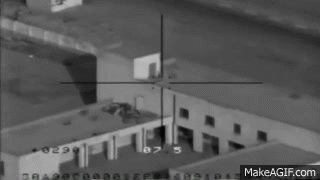-Cont-
Comparison
Overall, 498 incidents of conflict-related violence of different types – as listed at Table 3 – were recorded in Pakistan in 2023. Apart from 306 terrorist attacks cited earlier, these violent incidents also included: security forces' 129 anti-militant operational or kinetic strikes and their 24 armed clashes/encounters with militants; a combined total of 12 cross-border attacks from Afghanistan, India and Iran; 10 incidents of communal/faith-based violence including mob attacks; seven (7) terror plots or bids; four (4) incidents of sectarian clashes; two incidents each of political/ethnic violence and inter-tribal clashes/attacks; one inter-militant clash/attack; and one act of abduction. These overall incidents of violence killed a total of 1,232 people and injured 1,254 others.
The number of overall incidents of conflict-related violence posted an increase of over 25 percent, from 398 in 2022 to 498 in 2023. As in the year before, the increase in overall violent incidents was mainly contributed by an upturn recorded in the number of terrorist attacks as well as counter terrorism operations. The overall number of people killed in these violent incidents also increased, by over 48 percent; from 832 in 2022 to 1,232 in 2023. (See Chart2)
As cited earlier, for the third year in a row the number of terrorist attacks in Pakistan posted an upsurge in the year 2023. This upsurge in terrorist violence in Pakistan also coincided with the Taliban's rise to power in the neighboring Afghanistan.
Indeed, the year 2020 was the last year that had witnessed a relative decline in terrorist violence in Pakistan; that decline had been ongoing since 2014-15 following the military operations in ex-FATA, Karachi and an extensive counter-militancy campaign across the country including as part of National Action Plan. But from 2021-onward this declining trend did not sustain, and the incidence of terrorist attacks took an upturn. (See Chart 3 and Table 4)
As described in the Table 4, in the year 2023 the number of terrorist attacks in Pakistan marked an increase of 17 percent from the previous year.
That comparative upsurge in terrorist violence was contributed by an increase in the number of attacks reported from all four provinces. The frequency of terrorist incidents in the Balochistan province increased by 39 percent, compared to 2022, and the number of those killed in these attacks also increased, by 116 percent. In Khyber Pakhtunkhwa, although the number of attacks rose marginally (by 3 percent) from previous year, but the number of people killed in these attacks increased by 43 percent and those of injured by 99 percent.
Similarly, the incidence of terrorist violence in Punjab and Sindh also increased in 2023, by 100
percent and 87 percent, respectively.
Compared to 14 in the year before, as many as 23 suicide and fedayee attacks happened in
2023 including 18 in Khyber Pakhtunkhwa, and five in Balochistan. These attacks claimed 315
lives – compared to 108 in 2022 – and injured 560 others. As many as 22 of these suicide
attacks were carried out by different religiously inspired militant groups, while one attack was
perpetrated by a Baloch insurgent group BLA in Turbat (Kech) in Balochistan.
Among religiously inspired militants, the TTP was reportedly involved in 11 recorded suicide attacks, including four attacks each in Khyber and North Waziristan, and one attack each in Bannu, Peshawar (in KP) and Quetta (in Balochistan).
All suicide blasts by the TTP targeted security forces and law enforcement agencies. The worst of suicide blasts by the TTP was the one that hit policemen in Police Lines mosque, Peshawar on January 30 martyring over 84 people including 81 policemen.
Tehrik-e-Jihad Pakistan (TJP), which is considered a TTP's subsidiary or coverup group, claimed four suicide attacks in Peshawar, Bajaur, DI Khan and Lakki Marwat targeting security forces. One of the TJP-coordinated suicide attacks martyred 23 army soldiers in DI Khan on December 12. Hafiz Gul Bahadur group perpetrated two suicide blasts in Bannu targeting security forces that martyred nine soldiers and two civilians. Meanwhile, Islamic State-Khorasan (IS-K) perpetrated three major suicide bombings in 2023 including one each in Bolan (martyring 9 Balochistan Constabulary officials and one civilian), Bajaur (martyring 64 civilians in a JUI-F political gathering), and Mastung (martyring over 63 people in a 12th Rabiul Awwal (the birthday of the holy prophet (PBUH) procession). Meanwhile, two suicide bombings (in Zhob in Balochistan and Hangu in KP) remained unclaimed.
A total of 12 violent incidents (attacks and clashes) took place at Pakistan's borders with Afghanistan, India and Iran, compared to 15 such incidents in the year before. These incidents claimed 26 lives (10 civilians, seven army soldiers, and nine militants) and injured 21 others.
Seven of these incidents happened at or from across the country's border with Afghanistan
including six in Khyber Pakhtunkhwa and one in Balochistan, killing 14 people and injuring 17
others. These seven incidents only entail the border happenings and don’t include the
incursions by the TTP or other militants wherein they crossed the border and carried out attacks
inside Pakistan.
Meanwhile four attacks happened from across the Line of Control (in Kotli, Neelum and Poonch districts of AJK), and Working Boundary with India (in Sialkot, Punjab) that caused in all eight deaths and injuries to another four people. Apparently the situation at Pak-India border is not as calm as it had been following February 2021, when Pakistan and India recommitted themselves to the 2003 ceasefire arrangement at the Line of Control.
Similarly, another attack was reported from across the Iranian border in Kech (Balochistan),
which claimed the life of four army soldiers. Compared to 87 in the year before, security forces and law enforcement agencies conducted 129 anti-militant operational strikes in Pakistan in 2023.
These actions caused a total of 425 fatalities (373 militants, 43 army soldiers, five policemen, two Levies, and two civilians), as compared to 327 in 2022, besides injuring 51 others. Out of the total 129 operational strikes recorded in 2023, as many as 97 happened in Khyber Pakhtunkhwa, 28 in Balochistan, three in Punjab, and one in Sindh's provincial capital, i.e., Karachi. While the anti-militant operations were reported from 31 districts and regions across Pakistan, however there were only nine districts where five or more such operations happened in the year. These were Kech and
Quetta in Balochistan, and Bannu, DI Khan, Khyber, North and South Waziristan, Peshawar, and Tank districts in KP. The highest number of kinetic operations for any one district was reported from North Waziristan (21 operations), followed by DI Khan (17), South Waziristan (12), Khyber (9), Peshawar and Tank (8 operations each), and Kech (7 operations).
Security and law enforcement agencies also entered into in a total of 24 armed clashes and encounters with militants – compared to 11 such incidents in previous year – in 13 districts or regions of the country. These armed clashes and encounters claimed 55 lives (37 militants, 16
army soldiers, and 2 policemen) and injured two militants and one policeman. As many as 21
of these clashes and encounters (or over 87 percent) took place in Khyber Pakhtunkhwa
(mainly between the security forces and the TTP militants). Meanwhile, two such clashes
happened in Punjab and one in Karachi.
Compared to eight in 2022, as many as 10 incidents of communal or faith-based violence
including four incidents of mob violence were also recorded in Pakistan in 2023. These incidents
claimed the lives of three [Muslim] persons accused of blasphemy in Sheikhupura (Punjab),
Mardan (KP) and Kech (Balochistan), and injured 16 others including 15 Hindu students in
Lahore and one member of Christian community in Faisalabad.
Few highlights of communal violence in 2023 included attacks on and sabotage/ransacking of at least four worship places of Ahmadi community in Karachi, as well as torching and ransacking of at least 19 churches, and 86 residences of members of the Christian community in Faisalabad.
Overall, these incidents of communal and mob violence targeted worship places and members of Ahmadi community in four attacks, blasphemy-accused individuals in three attacks, Christian community and churches in two incidences, and members of Hindu community in one such incident.
Sectarian violence has apparently also picked up in Pakistan as in the year under review a total
of 43 people lost their lives and another 61 were injured in 12 sectarian-related terrorist attacks
and four sectarian clashes. Incidents of sectarian violence were reported mainly from Karachi
in Sindh (7 incidents), Kurram in KP (5), Mastung and Quetta in Balochistan (3), and Diamir in
Gilgit-Baltistan (one incident).
The number of people killed in overall violent incidents in 2023 (1,232) represented an increase of about 48 percent from those killed in such incidents in the year before (832). The reported increase in fatalities was marked by the martyrdom of 405 personnel of security forces and law enforcement agencies in overall violent incidents, compared to 264 in previous year.
Fatalities among civilians in 2023 (302) were nonetheless over 64 percent more from the previous year’s fatalities among them (184). There was also an increased number of militants killed (525), in these violent incidents, compared to 2022 when 384 militants were reportedly killed. (See Table 6)
-Cont-
















